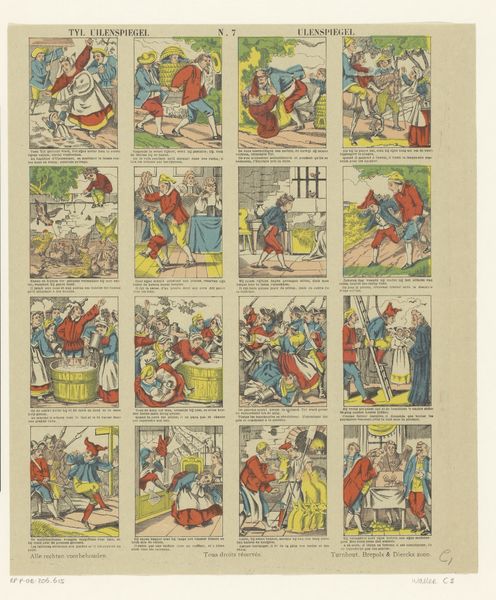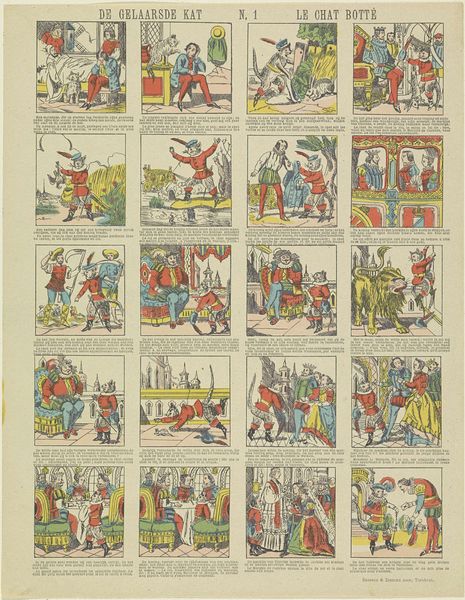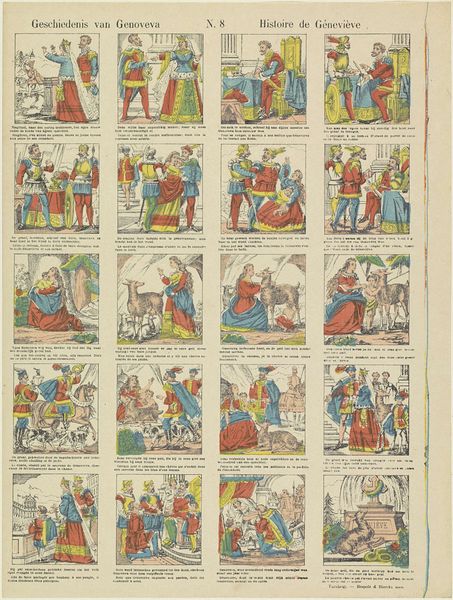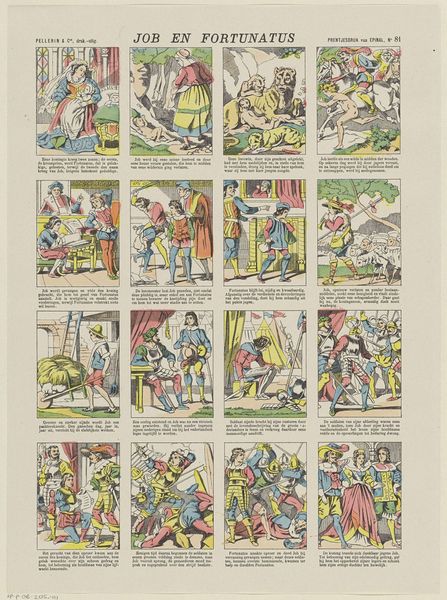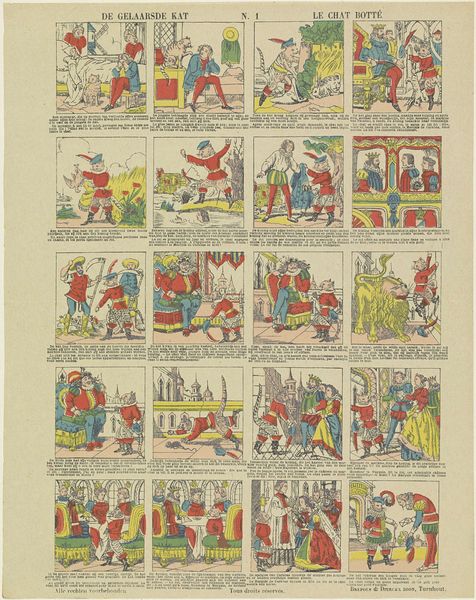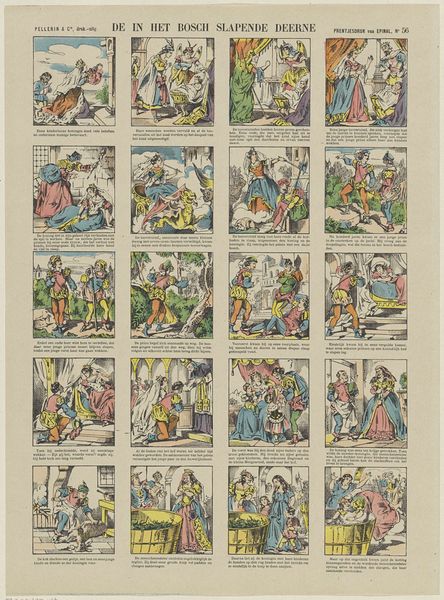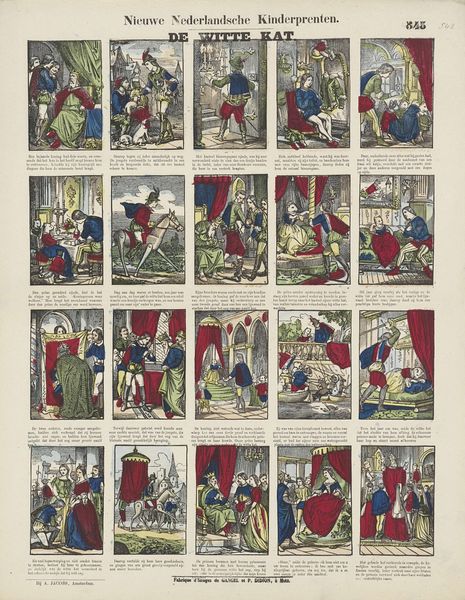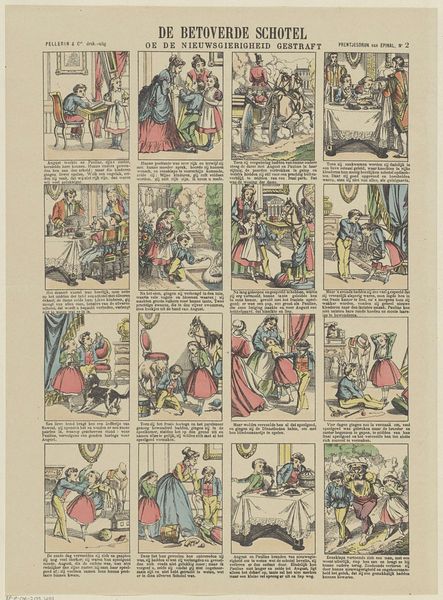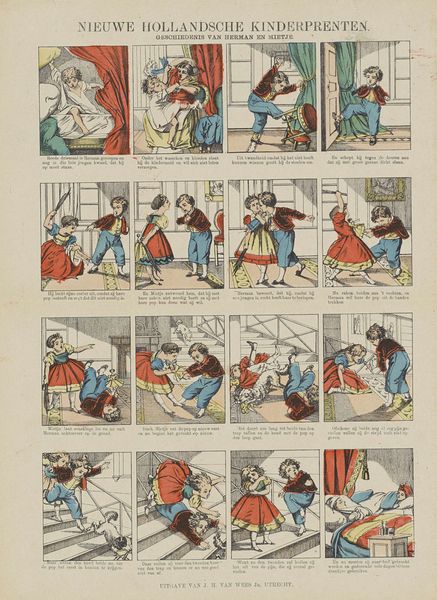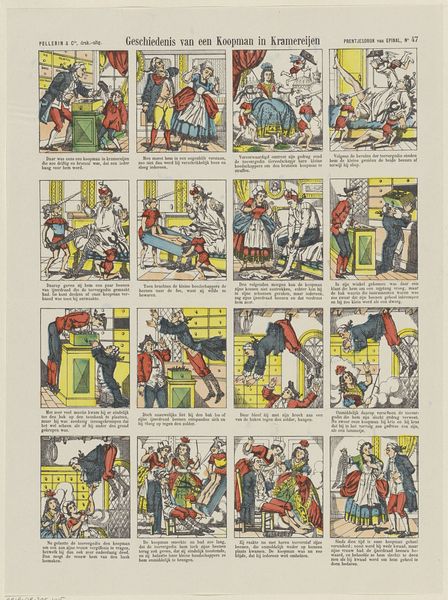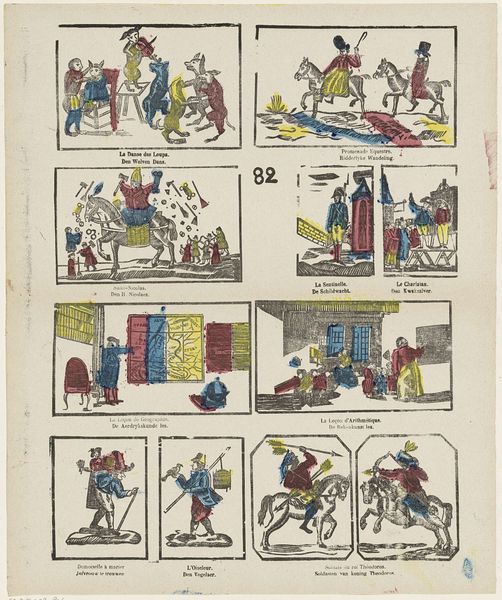
De ezel, de hond, de haan en de kat / Of de Amsterdammer stadsmuziekanten / L'ane, le chien, le coq et le chat / Ou les musiciens Amsterdammois 1833 - 1911
0:00
0:00
brepolsdierckxzoon
Rijksmuseum
graphic-art, print
#
graphic-art
#
comic strip sketch
#
narrative-art
#
comic strip
#
animal
# print
#
dog
#
figuration
#
folk-art
#
comic
Dimensions: height 396 mm, width 305 mm
Copyright: Rijks Museum: Open Domain
Curator: This intriguing print is titled "The Donkey, the Dog, the Rooster, and the Cat / Or the Amsterdam Town Musicians." It comes to us from the studio of Brepols & Dierckx Zoon, active between 1833 and 1911. Editor: Immediately, I notice the grid-like layout. It's almost like a storyboard, or an early form of a comic strip. There's a quirky charm to the simple colors and slightly rough lines. Curator: The use of printing –lithography perhaps– suggests a democratization of image-making. Here we have sequential imagery, and it places it firmly in a world of reproducible visual culture intended for a broad audience. This would be produced as widely as possible. Editor: Absolutely. And considering the animal figures dressed as humans, it likely carried some form of social critique. It draws on folklore and traditional forms to perhaps question established social norms or political happenings of the era. We see so much gesture, especially with hands that seem over-articulated for human hands, which makes me consider the theatrical elements involved here. Curator: These characters may have been part of a performance, reflecting how art institutions might represent folk-art and commodify what was once common. By the late 19th century, as well, prints were extremely cheap, and widely bought by working class citizens who wanted more in the household, for educational, and decorative purposes. Editor: It makes me wonder about the division between “high art” and accessible, popular imagery at the time. Where did the means of producing those artworks overlap? Were any fine artists doing more illustrative or graphic work? Curator: The choice of graphic art is particularly interesting as the artists likely knew their work would be placed amongst many, therefore the goal was to use striking colors to catch the public eye to guarantee financial security for the shop. Editor: Considering the era, what distribution networks were available for such prints? Did they find their way into newspapers, affordable books, or broadsides on walls? Curator: Excellent question. Most likely sold during large events throughout the city, but also through subscriptions. There would've been designated distribution points around the cities they were published in. Editor: Overall, I think this print gives us a glimpse into how narrative could be produced and circulated amongst a broader public in the 19th century. Curator: A reminder that accessibility and materiality have always been at the forefront of artistic endeavors. Thank you for exploring the material and labor with me, especially the potential audience.
Comments
No comments
Be the first to comment and join the conversation on the ultimate creative platform.
